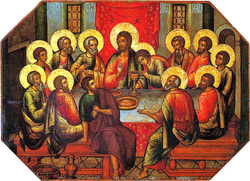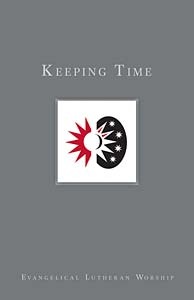
In the past few weeks I have been asked by a variety of people what is Maundy Thursday? What happens on this day set apart from others?
While Jesus was no stranger to eating with people this was a special meal. From personal experience I have noticed that something happens when you share a meal with someone, you aren't just nutritionally strengthened and nourished but often the relationship is as well. It is over pot lucks, soup suppers and coffee that I have gotten to know people and it is in the sharing of a meal I have been invited into people’s lives.
This last supper is unique as it unites those at the table into one community. “On the last super before his death, Matthew, Mark, Luke, and Paul all say that he established the meal of bread and wine as permanent signs of the covenant God made with us through Christ. The meal makes Christ present, and throughout the ages his followers could receive the benefits of his suffering, death, and resurrection in their sharing of the meal.”[1] In other words Christ’s death and resurrection comes with God’s promise of salvation, forgiveness and being restored to a right relationship with God , this is all made real and tangible as we take part in sharing the bread and wine.
In Matthew, Mark and Luke the last supper also takes place at the same time as the Passover meal. The gospels may be trying to make the connection to the long celebrated festival of unleavened bread, aka Passover, in which the people of God remember being liberated from Egypt. In the Passover, “the lamb signified God’s covenant of life, and the unleavened bread recalled ‘the bread of affliction’ of their sufferings during slavery. For the Christian community, the lamb is Christ himself. The bread of affliction is the body of Christ, and the blood on our doorposts the sign of God’s salvation.”[2]
While Jesus was no stranger to eating with people this was a special meal. From personal experience I have noticed that something happens when you share a meal with someone, you aren't just nutritionally strengthened and nourished but often the relationship is as well. It is over pot lucks, soup suppers and coffee that I have gotten to know people and it is in the sharing of a meal I have been invited into people’s lives.
This last supper is unique as it unites those at the table into one community. “On the last super before his death, Matthew, Mark, Luke, and Paul all say that he established the meal of bread and wine as permanent signs of the covenant God made with us through Christ. The meal makes Christ present, and throughout the ages his followers could receive the benefits of his suffering, death, and resurrection in their sharing of the meal.”[1] In other words Christ’s death and resurrection comes with God’s promise of salvation, forgiveness and being restored to a right relationship with God , this is all made real and tangible as we take part in sharing the bread and wine.
In Matthew, Mark and Luke the last supper also takes place at the same time as the Passover meal. The gospels may be trying to make the connection to the long celebrated festival of unleavened bread, aka Passover, in which the people of God remember being liberated from Egypt. In the Passover, “the lamb signified God’s covenant of life, and the unleavened bread recalled ‘the bread of affliction’ of their sufferings during slavery. For the Christian community, the lamb is Christ himself. The bread of affliction is the body of Christ, and the blood on our doorposts the sign of God’s salvation.”[2]

It is in the sharing of the meal, coming to the table that we become united in the body of Christ. John however adds an extra element, foot washing. Jesus performs the task of a house servant as he washes the feet of the disciples. Personally, I am not a fan of feet. To me they are really strange limbs. I also don’t want anyone to touch my feet unless they are giving me a pedicure or I have recently had a pedicure. I believe in today’s society it is a vulnerable thing to let people that close to your toes when you are not even in a sandal wearing season. Yet Jesus humbles himself to wash the disciples feet and in doing so establishes the kind of relationship Christ has to all people and the kind of relationship we are to have with one another, a relationship of humble service. Jesus also provides the greatest commandment in which we are to love one another.
So what sets this day apart, the meal and the command which in Latin means Maundy. It is a day of which we gather as a community, share in the meal and promise of God’s love and forgiveness not just for us the individual but for all who come to the table. It is a day to remember how Jesus humbly served by washing feet and through his death on a cross. It is a day to remember that we too are asked to love as he did.
[1] Keeping Time: Evangelical Lutheran Worship. Augsburg Fortress. 2009, (98)
[2] ibid 98.
So what sets this day apart, the meal and the command which in Latin means Maundy. It is a day of which we gather as a community, share in the meal and promise of God’s love and forgiveness not just for us the individual but for all who come to the table. It is a day to remember how Jesus humbly served by washing feet and through his death on a cross. It is a day to remember that we too are asked to love as he did.
[1] Keeping Time: Evangelical Lutheran Worship. Augsburg Fortress. 2009, (98)
[2] ibid 98.

 RSS Feed
RSS Feed
